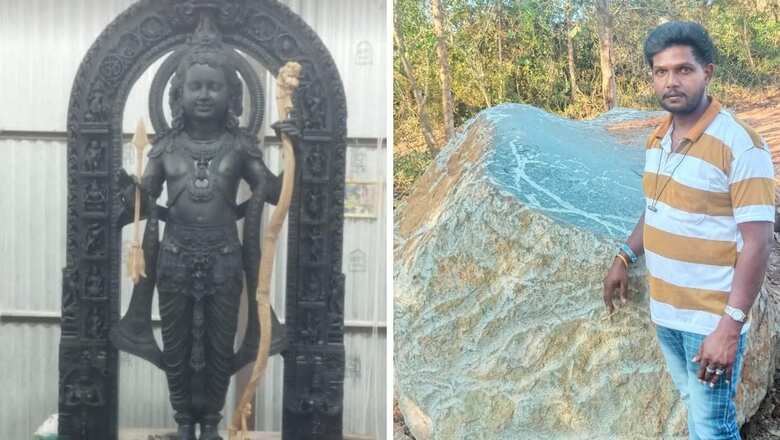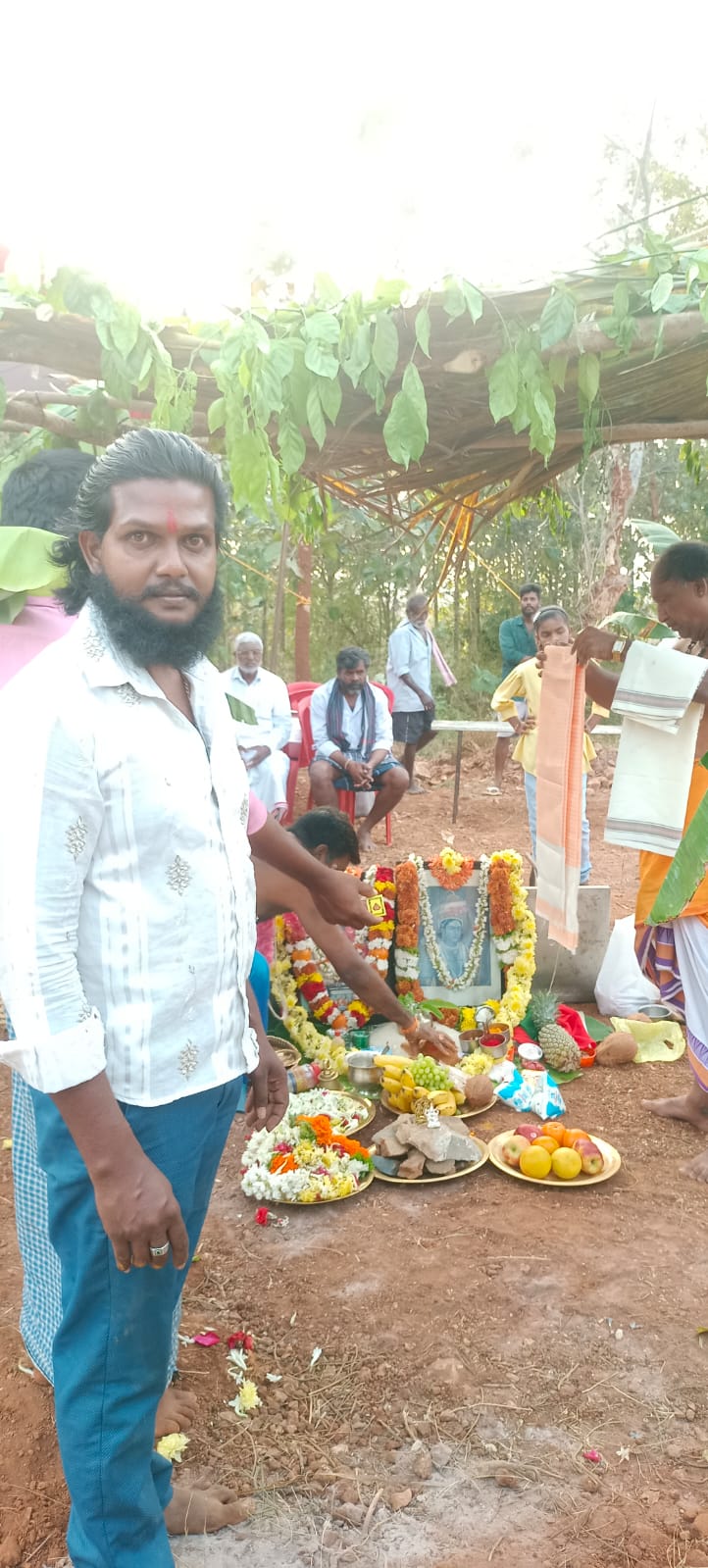
views
The Krishna Shila or black stone used to make the mesmerising idol of Ayodhya’s Ram Lalla, which was unveiled on Friday, much to the excitement of devotees, traces its origins to Gujjegoudanapura village in Karnataka’s Mysuru. The idol has been sculpted by Arun Yogiraj, who also hails from the same region.
News18 spoke to Srinivas Natraj on how the monolith was identified and now stands transformed into an idol of a young Lord Ram holding a bow and arrow, standing atop a lotus.
“Not just Rama, but the monoliths for Sita, Lakshmana, and Shatrughna have also been sourced from us. We had sent a 9 ft x 8 inch monolith in February 2023, which Arun Yogiraj transformed into a spellbinding idol. Three more stones will also be brought to life by the sculptors. When we got the call that our stone was 85% closest to what the Ayodhya temple trust members were seeking, our happiness knew no bounds. It was like the Gods were showering their blessings on us," said Srinivas.
#BreakingNews | Ram Lalla's FIRST image without blindfold, UNVEILED. Take a look!News 18's @akankshaswarups in an #exclusive conversation with @swamidipankar #RamMandir #RamMandirPranPratishtha #RamLalla #RamMandirInauguration #ArunYogiraj pic.twitter.com/bK3pNgcBMm
— News18 (@CNNnews18) January 19, 2024
WHY KRISHNA SHILA?
The Krishna Shila has a speciality. Its radiant bluish-black tint stone is known to be closest to the colour of Lord Krishna, hence the name. The stone, also called Nellikaru rocks, is relatively softer, facilitating sculptors to carve it easily. It gets tougher over years, thus firming the artistic work carved on it. This stone can be chiselled using minute tools for fine designs.
Largely containing lac, the Krishna Shila also exudes a special sheen, making the idols and intricate carvings shine when the sun rays fall on it. A majority of temples in Southern India use this stone to carve idols, which are found in abundance in Mysuru and HD Kote region of Karnataka.

THE ‘GROUND’ WORK
Srinivas’s family has been in the business of quarrying and providing Krishna Shila stones to sculptors across the country for generations.
In their search for land where they could continue quarrying, they chanced upon an area. “We used a JCB to level the area. We found a solid piece of rock which was over 10 feet tall. We were unable to lift it using heavy machinery. After much work, it was removed and set aside," said Srinivas, who further recalled how Surendra Vishwakarma, a person associated with building temples, contacted them.
“He inspected the monolith and said it was a rare piece. We connected with Gopal ji of the Ayodhya Trust over a video call, and he, too, agreed that it was a unique piece of stone. Monoliths from Chennai and Nepal were also sent to Ayodhya. But we were destined to serve Lord Ram and the Ayodhya temple," the quarry owner said.
Srinivas said that the monoliths to carve the idols of Sita, Lakshmana and Shatrughna have been transported to Ayodhya. “We sought time as we wanted to ensure that the stone did not have any cracks, stains or lines that could cause problems later while sculpting. We wanted to ensure we deliver our 100% to God," he added.
After the monolith from Mysuru was finalised, a special bhoomi puja was conducted by the priests.
On January 22, when the pran pratishtha puja takes place in Ayodhya, a parallel puja will also be held in Gujjegoudanapura village to celebrate their connection to the temple.

















Comments
0 comment